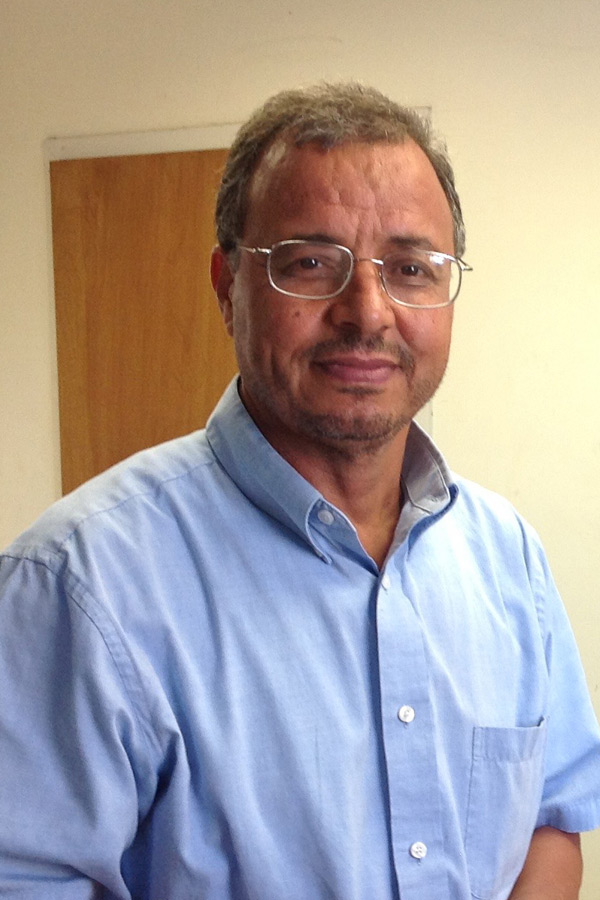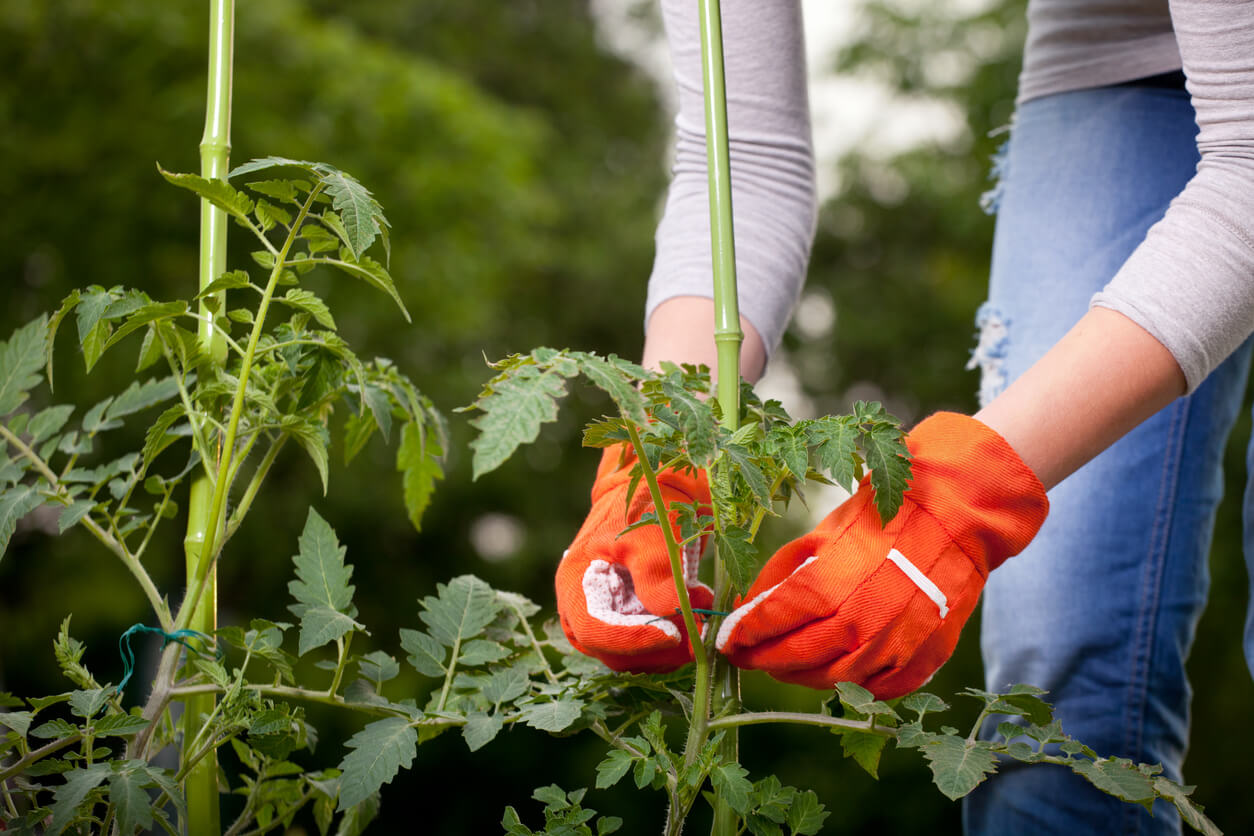.jpeg)
For Borlaug Fellow Urtnasan “Uugii” Ganbaatar, the opportunity to work with University of Georgia wheat breeder and geneticist Mohamed Mergoum is opening up a world of growth. With her colleagues at the Institute of Plant and Agricultural Sciences (IPAS), part of the Mongolian University of Life Sciences, Ganbaatar wants to implement the advanced breeding techniques used at UGA to improve her country's dominant crop.
Ganbaatar’s 12-week research program at the UGA Griffin campus is funded by the Borlaug International Agricultural Science and Technology Fellowship Program, a highly competitive research and training program of the U.S. Department of Agriculture’s Foreign Agricultural Service for early to mid-career scientists, researchers and policymakers. The program, which brings fellows to a U.S. university, research center or government agency to collaborate with a mentor on a specific research project, honors Norman E. Borlaug, the American agronomist, humanitarian and Nobel laureate known as the father of the Green Revolution.
Better breeding through technology
A doctoral student in food biotechnology at the Mongolian University of Science and Technology (MUST), Ganbaatar has served as the head of the biochemical and technological laboratory at IPAS for eight years.
In her application for the Borlaug Fellowship, she proposed bringing samples of Mongolian wheat varieties for in-depth analysis using molecular technology, gel electrophoresis and high-performance liquid chromatography (HPLC). Through the Borlaug Fellowship selection process, she was matched with UGA’s College of Agricultural and Environmental Sciences and Mergoum, who is the Georgia Seed Development UGAF Professor in Wheat Breeding and Genetics in the Institute of Plant Breeding, Genetics and Genomics (IPBGG) and Department of Crop and Soil Sciences.
While molecular technologies including genomic selection (GS) and marker-assisted selection (MAS) are the standard in Mergoum’s lab, HPLC and gel electrophoresis are standard technologies still available in labs at UGA. He is guiding Ganbaatar in her work using those technologies to identify genes associated with quality traits — including grain protein content and its component, high and low molecular weight glutenin — in 93 Mongolian wheat varieties. Ganbaatar’s institute owns equipment that can perform those analyses but lacks staff trained in its use.
About 90% of all agricultural production in Mongolia is devoted to wheat production, but without modern technologies, the wheat breeding process to develop and release new cultivars takes more than twice as long using traditional methods that cannot pinpoint desired traits. Ganbaatar will work with breeders at IPAS to try to adopt methods similar to those used in UGA’s small grains breeding program to hasten the release of new wheat cultivars.
“Wheat is our dominant crop and, when we are developing varieties, we have to spend a lot of time on the process because we can’t use molecular technologies due to lack of equipment, staff and laboratory area,” Ganbaatar said. Wheat varieties released by IPAS were developed over 28 years. UGA wheat breeders can develop and release a new variety within 10 to 12 years, on average.

“The research during my fellowship supports my doctoral thesis, which is focused on improving wheat quality by identifying what genes are responsible for protein quality, particularly high molecular weight glutenin,” said Ganbaatar, who added that specific gluten molecules are responsible for the characteristics needed in breadmaking.
Mining for genetic gold
One of the main goals of the wheat breeding program in Mongolia is to produce improved varieties that will reduce the country’s dependence on imports of foreign wheat, which is currently mixed with Mongolian wheat for bread and flour production in the country.
During her fellowship, Ganbaatar has been working with Mergoum to extract DNA from 93 cultivated and indigenous wheat varieties she brought with her from Mongolia to identify genes and traits that could be used to breed new cultivars using classical and genomic selection methods.
“Of the 93 samples I brought with me, 17 were developed at our institute and others are local, indigenous varieties no one has ever studied before,” she said. “If they have good qualities, we can use those for crossing with cultivated wheat to develop new varieties.”
Using advanced technologies to identify the desired traits and associated genetic markers to develop improved germplasm — living genetic material such as seeds or tissues used in plant breeding — reduces both the time it takes to develop new varieties and the guesswork associated with traditional plant breeding.
“Indigenous varieties are a gold mine for genes that control desirable traits because they have been grown for centuries and are adapted to the environment. They may not be the highest yielding, but they are fit, which means they have a balance of traits for productivity, quality and resistance to disease, pests or drought that cultivated varieties do not have,” Mergoum said. “Indigenous varieties may not perform as well in yield compared to modern varieties developed using modern tools and methods, but you can take those desirable genes from those indigenous varieties and insert them into cultivated varieties.”
In the U.S., there are typically one to two wheat breeding programs in every wheat-producing state, each focused on the class of wheat grown in the region. Mergoum has developed or contributed to the release of 20 varieties of soft red winter wheat since joining UGA-Griffin in 2015. Prior to that, he released 13 hard red spring wheat cultivars while on the faculty at North Dakota State University between 2002 and 2015.
“The varieties IPAS is developing are known for strong gluten and high protein content. Here in Georgia, we grow soft red winter wheat that is low in protein and is aimed for use in pastries and cookies and other items that don’t need strong gluten,” Mergoum said. “It is a completely different class of wheat, but the science of developing varieties is the same. When you are developing a variety for release, you are looking for high yield, disease resistance and grain quality. When you release a variety, you have to provide all of that information to the growers. If it does not meet a certain standard, it can all be thrown out and more than a decade of work could be lost.”
Ganbaatar will take the training and knowledge she has received in molecular technologies, gel electrophoresis and HPLC home with her to teach her colleagues, improving their research capabilities. She has recorded several videos demonstrating the use of UGA’s equipment, which she has shared with her colleagues in Mongolia.
“There is a molecular biology laboratory in my institute, but there is a lack of trained staff, and they can’t run the machines. Now we will have that capability to use molecular markers,” Ganbaatar said.
Continuing Borlaug’s legacy
.png)
Ganbaatar is the third Borlaug Fellow Mergoum has mentored at UGA. Previous Fellows were from Ukraine and Ethiopia.
“(Borlaug) believed that, as scientists, we have obligations to train people in developing countries so they can help themselves and sustain food production,” said Mergoum, adding that he had the privilege of working with Borlaug while serving as a scientist with the Consultative Group on International Agricultural Research's International Maize and Wheat Improvement Center (CIMMYT) in Mexico from 1995 until 1999.
“In science, you should take the barriers of universities and countries away — your goal is to improve production and help whoever needs help. At UGA we are a public university, and we want to have an impact, not only on the state or country, but worldwide,” Mergoum said.
Victoria McMaken, coordinator of international programs at CAES, explained that having international scholars like Ganbaatar working with UGA researchers is vital to developing long-term international collaborations with both individuals and institutions.
“By being here, Ganbaatar has helped further internationalize the Griffin campus and enrich the campus community. Hopefully she will always think of UGA as a place that benefitted her and she will extend the reach of UGA as a university,” McMaken said. “It is our goal to be the No. 1 school of agriculture in the country and, to do that, we need to be well-known throughout the world. Every person who comes here to study extends that reach.”
In addition to working in Griffin with Mergoum, Ganbaatar visited UGA's Athens campus to meet colleagues in the IPPPG to establish research connections and meet with other faculty, including IPBGG director Wayne Parrott , Zenglu Li and Ali Missaoui, to gain insight into the most advanced technologies used in genetics and genomics, including genetic modifications.
Fellows have the opportunity to attend professional conferences and other events within their field, such as the annual Norman E. Borlaug International Symposium, sponsored by the World Food Prize Foundation, which Ganbaatar attended with Mergoum in October. In November, they attended the 2022 Agronomy Society of America-Crop Science Society of America-Soil Science Society of America International (ASA-CSSA-SSSA) Annual Meeting in Baltimore and visited the U.S. Department of Agriculture in Washington, D.C.
The Borlaug Fellow program covers travel for mentors to visit their mentees’ institution after the U.S. fellowship is complete to follow up on the research initiated during the program and for knowledge exchange. Ganbaatar and Mergoum will also have the chance to jointly publish academic papers on their research.
“It will be good for Dr. Mergoum to come to my country to see our research conditions and to give good advice to improve our breeding program,” said Ganbaatar, who anticipates completing her doctorate in fall 2023. “I have learned so much from my mentor, U.S. Department of Agriculture staff and my labmates. I have increased my understanding of molecular biology, and what I have learned here will help improve the quality of wheat for seed and flour production in Mongolia.”
For more information on international programs at CAES, visit caes.uga.edu/departments/international-programs.






